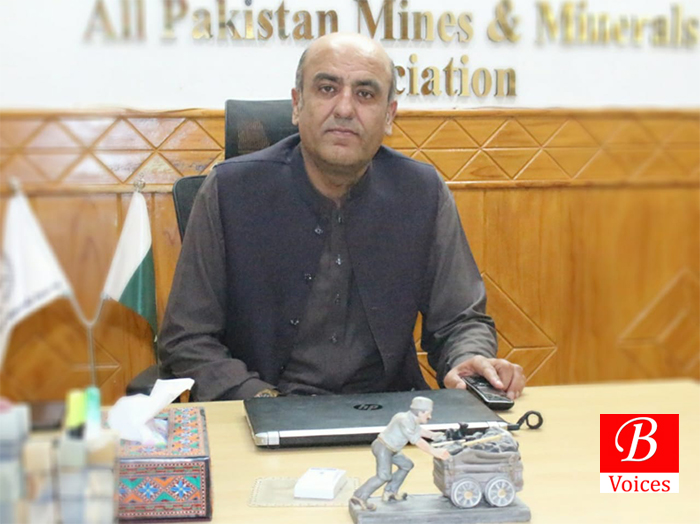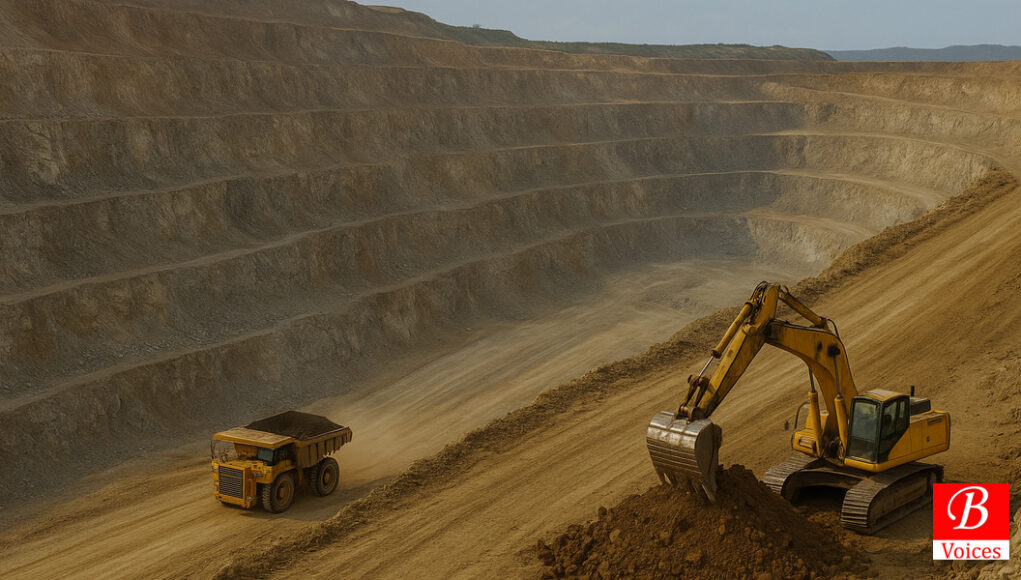Fateh Shah Arif
Pakistan is blessed with an abundance of mineral resources, including copper, gold, chromite, and rare earth metals, all of which are vital to modern economies. Yet for decades, our mining sector has remained shackled by outdated colonial-era laws and bureaucratic inertia. The Mines and Minerals Harmonization Act, 2025, introduced under the supervision of the Special Investment Facilitation Council (SIFC), aimed to correct that. It promised to harmonize provincial laws, attract foreign investment, and usher in a new era of economic development, particularly in resource-rich but underserved provinces like Balochistan.
However, despite the good intentions, the way this Act has been formulated and rushed through approvals has created a deep trust deficit between the federal government, provincial authorities, and mining stakeholders. Instead of uniting the country around a common framework, the Act risks deepening provincial alienation and politicizing a vital sector.
From Imperial Legacies to Federal Overreach
Pakistan’s mining legislation traces its roots to the British Mines Act of 1923 and a 1948 law introduced just after independence. These laws were rebranded during 2000–2002 as “Mineral Rules,” but no substantial update was made to reflect modern economic realities or global shifts in mining demand.
After the 18th Amendment, provinces gained constitutional authority over natural resources. Yet only Khyber Pakhtunkhwa (2017) and Sindh (2021) have developed modern provincial mining laws. The rest of the provinces, especially Balochistan, continue to operate under outdated frameworks, making it difficult to regulate mining efficiently or attract transparent investment.
The Harmonization Act, under SIFC’s supervision, attempted to bridge this legislative vacuum. It involved representatives from all provinces in initial consultations. But the final version of the law, passed without key recommendations, has been widely criticized for violating the very principle of provincial autonomy it was meant to uphold.

The Role of SIFC: Facilitator or Enforcer?
The Special Investment Facilitation Council (SIFC) was created in 2023 to streamline investments in critical sectors. While its intent was to act as a neutral facilitator, its role in the Mines and Minerals Harmonization Act has raised alarms.
The Act was pushed through rapidly via provincial Chief Secretaries, bypassing necessary legislative channels such as provincial Law Departments and broader political consultations. Even more troubling, the Act was labeled “Immediate and Confidential” in official correspondence, creating confusion, mistrust, and a perception of backdoor policymaking.
This non-transparent approach has not only undermined trust but has also sparked public protests in Khyber Pakhtunkhwa and Balochistan. Had the process followed routine legal procedures, including validation by Law Departments and incorporation of community feedback, the outcome might have been far less contentious.
Federal Mineral Wing: A Trojan Horse?
One of the most debated aspects of the Act is the introduction of a Federal Mineral Wing (FMW). The Wing appears in the very first section of the Act but lacks a clearly defined structure or Terms of Reference (ToRs). This has led to fears that the FMW could act as an instrument of federal control, undermining the rights devolved to provinces under the 18th Amendment.
Equally problematic is the inclusion of two FMW representatives in the Mineral Investment Facilitation Authority (MIFA). Their roles are undefined, yet they sit on bodies that have the power to issue licenses, decide royalties, and govern critical investments. The fear is that instead of serving as investment facilitators, they might become power brokers with influence over provincial matters.
This perceived overreach into licensing, taxation, and resource allocation has provoked strong reactions from provincial governments, mine owners, and local communities alike.
Licensing Without Representation
The new licensing authority under MIFA excludes mine owners and provincial law department officials, who were previously involved in verifying legal compliance and ensuring community rights. Their absence is deeply concerning. Licensing is not just a bureaucratic task—it determines who profits, who is excluded, and how disputes are resolved.
Furthermore, the Act fails to secure provincial profit shares, a basic requirement for fairness and sustainability. For example, Balochistan’s government has created state-run mining companies like BMIC and BMRL. These should receive a legally guaranteed share of profits, especially in cases where licenses are granted to federal entities. Similarly, tribal communities living in mining areas should receive a 10% share in profits to ensure local ownership and peace during operations.
Small Miners, Big Losses
Small-scale mining remains the backbone of local economies in remote districts. These miners pay significant taxes and royalties to both federal and provincial governments. Yet the new Act demands an unrealistic Rs. 10 million bank statement from lease applicants—a move that will push local operators out of business and open the door to forged documents.
Instead, a more practical solution would be to increase the license fee, ensuring actual revenue generation while preserving local participation. The Act should also restore the original lease duration of 30 years instead of the newly proposed 10 years, aligning with past legislation and providing stability for long-term investment.
The Path Forward: Dialogue and Revision
Despite the many challenges, the Act is not beyond repair. It is a 139-page document developed after multiple consultations, and many of its sections offer a roadmap to unlock the sector’s full potential. However, unless its grey areas are revisited, it risks being seen as an instrument of centralization and exclusion. The way forward lies in transparent and inclusive dialogue among all stakeholders.
The role of the Federal Mineral Wing must be clearly defined with constitutional safeguards to ensure it does not infringe on provincial autonomy. Its involvement in licensing bodies should be restricted to facilitating foreign investors rather than exercising regulatory control. Provincial law departments and representatives of mine owners must be reinstated in licensing processes to ensure fairness and legal compliance. Provincial profit shares, especially in federal mining ventures, should be secured through legislation, while tribal communities in mining areas must be granted a reasonable stake to maintain social harmony and local ownership.
Furthermore, the financial requirements placed on small-scale miners must be revised, replacing the unrealistic bank statement condition with a more practical licensing fee structure. Extending the lease duration from 10 to 30 years, in line with past practices, will also encourage sustained investment and operational stability. These changes, if incorporated, can turn the Act into a genuinely harmonized and widely accepted legal framework.
Conclusion: Harmonization Must Not Mean Centralization
Pakistan needs investment, modernization, and good governance in its mining sector. But these cannot be achieved by sidelining provinces, ignoring stakeholders, and enforcing top-down legislation. True harmonization must be founded on dialogue, inclusion, and respect for constitutional boundaries.
Let us not turn a promising opportunity into another tale of mistrust and missed chances. By amending the Mines and Minerals Harmonization Act, 2025, in line with stakeholder concerns, we can still create a win-win outcome for all: federal and provincial governments, local communities, and the broader economy.
The writer is the Secretary General of the All Pakistan Mines and Mineral Association (APMMA).
Disclaimer: Views expressed in this article are those of the writer and Balochistan Voices does not necessarily agree with them.
Share your comments!








